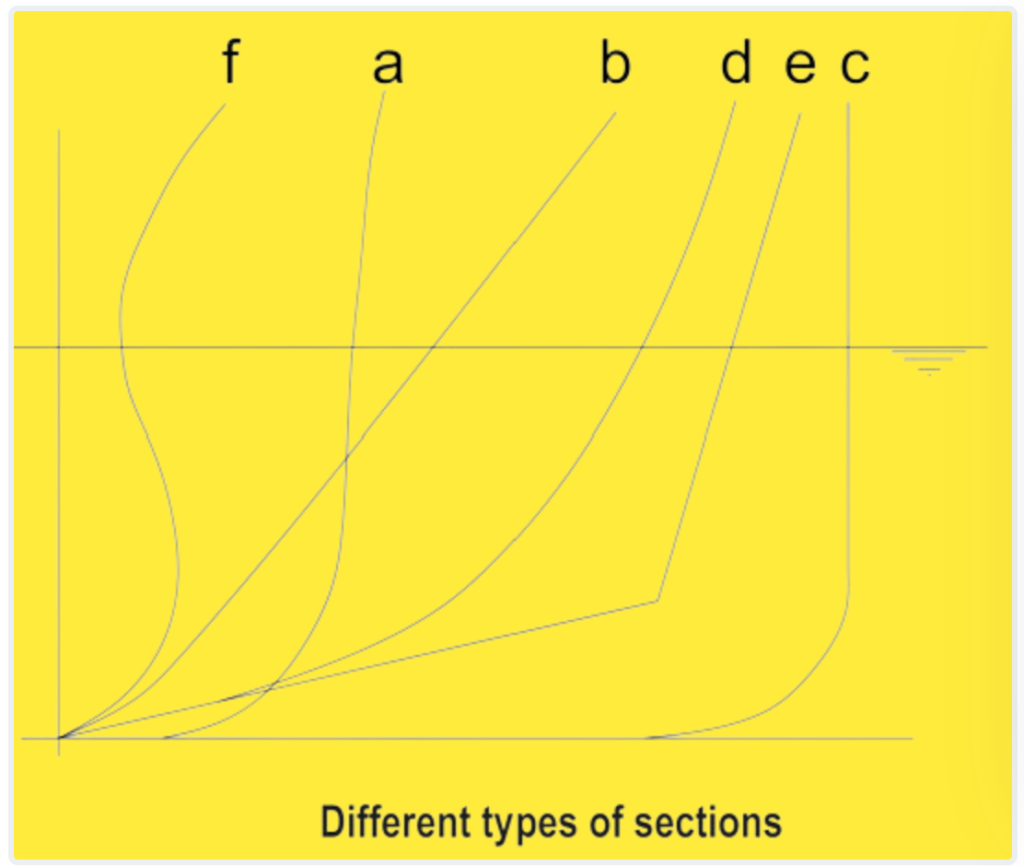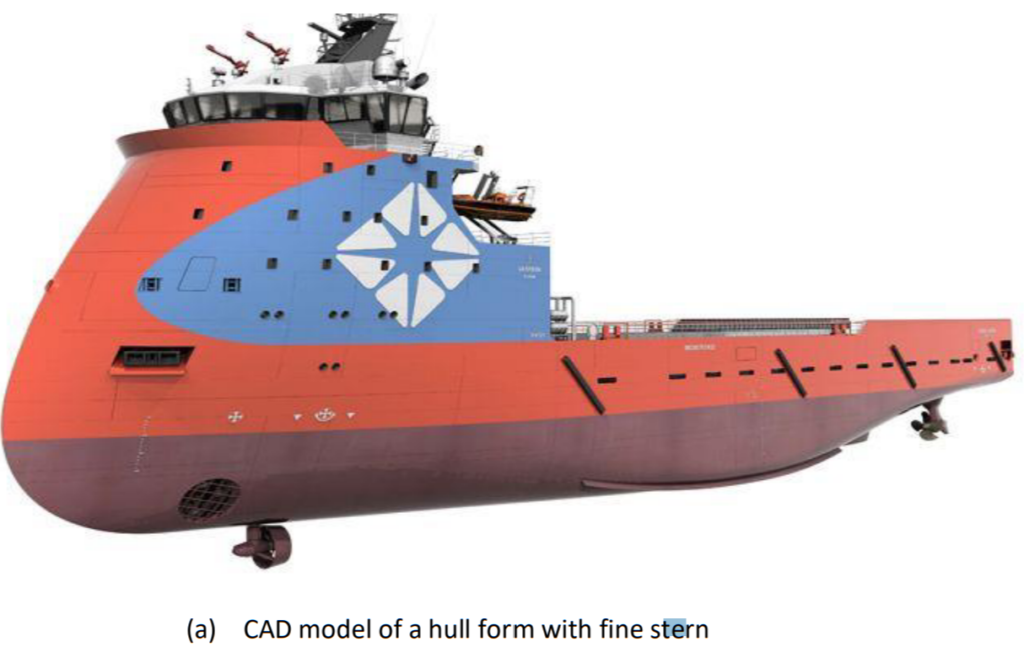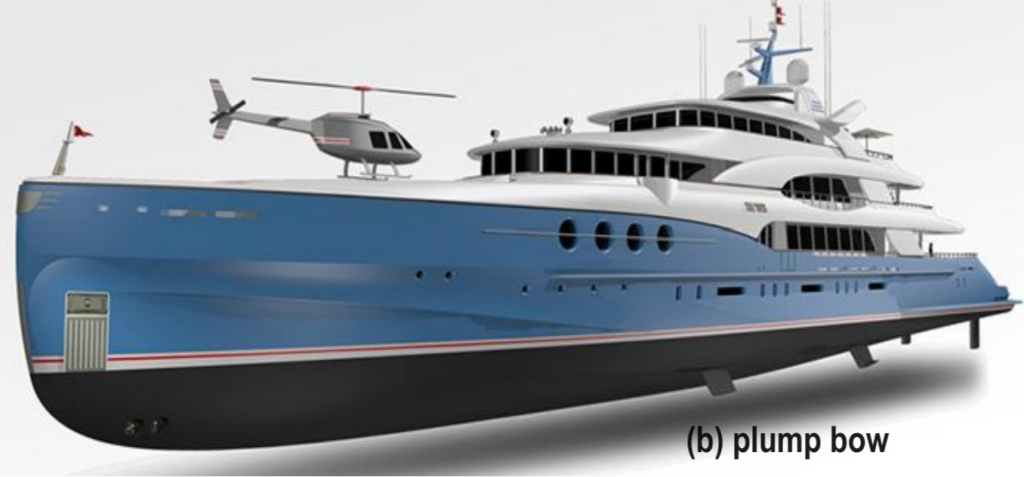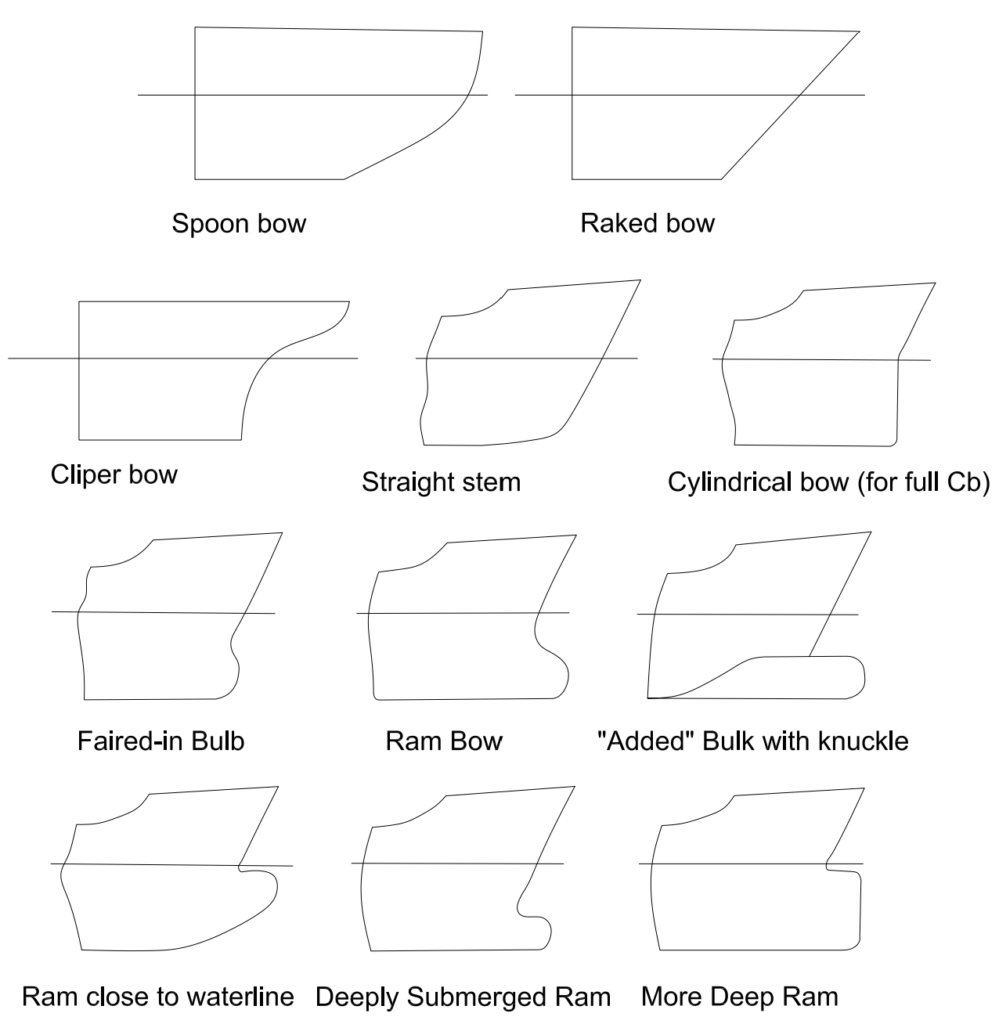Ship sections, also known as cross sections or transverse sections, are representations of a ship’s structure and geometry when viewed from a perpendicular direction to the longitudinal axis. These sections are essential for understanding the shape, dimensions, and arrangement of various components within the ship’s hull.
Common types of ship sections used in the field of Naval Architecture include:
(a) U-type: This section resembles the letter “U” in shape and is often used for the midship sections of vessels. It provides good volume and buoyancy distribution.
(b) V-type: The V-shaped section is characterized by its pointed bottom and is commonly used in the bow region of ships. It helps to reduce resistance and improve seakeeping qualities.
(c) Rectangular with round bilge: This ship sections combines a rectangular shape with rounded edges, particularly suitable for midship sections. It offers a balance between volume and hydrodynamic efficiency.
(d) Circular type: This ship sections features a circular shape, often with a nearly constant radius. It is commonly used in sailing yachts and provides good stability and resistance to rolling motions.
(e) Hard chine: The hard chine section has distinct angles or corners, typically used in boats with single or double chines. It provides stability and can be more easily manufactured than rounded sections.
(f) Bulbous type: This section is characterized by a bulbous protrusion typically added to the bow or stern regions of a vessel. It helps to reduce wave-making resistance and improve fuel efficiency, especially at higher speeds.
Each type of ship section has its advantages and is selected based on the specific requirements and design considerations of the vessel.

Midship Section
The midship section of a ship is a critical aspect of preliminary ship design, and its configuration depends largely on the type of vessel being designed. For cargo ships, a rectangular midship section is commonly employed, providing ample space for cargo storage. Conversely, for fast ships such as high-speed crafts (HSC), a larger bilge with a hard chine cross-section is often preferred to enhance stability and performance at high speeds.
When defining a midship section, key parameters such as the midship area (A), draft (T), beam (B), and freeboard (F) are considered. The configuration of the midship section is primarily determined by the bilge radius and the bottom deadrise, which influence factors such as hydrodynamics, stability, and seakeeping characteristics.
By adjusting the bilge radius and bottom deadrise, naval architects can optimize the midship section design to meet the specific requirements and operational demands of the intended vessel, whether it’s a cargo ship, high-speed craft, or another type of vessel.
Relationship of Bow and Stern Sections
The relationship between the bow and stern sections of a ship with the midship section is crucial in ship design and directly impacts the vessel’s performance, stability, and functionality. The shape and type of ship sections used in the bow and stern regions depend largely on the configuration of the midship section and the specific requirements of the ship type.
For instance, if the midship section is full-bodied, characterized by a U or V type section, then similar U or V type sections may be used to connect the midship region with the bow and stern regions. Conversely, if the midship section is of a V-type, as seen in catamarans or high-speed crafts (HSC), then the bow and stern sections should also adopt a V-type configuration for seamless integration and optimal performance.
Special considerations must be given to ships with unique features such as a bulbous bow or a transom stern. A bulbous bow typically requires streamlined sections to complement its shape, while a transom stern necessitates wider sections at the stern area for stability and structural integrity.
Furthermore, operational requirements play a significant role in determining the bow and stern forms. For example, ferries, which prioritize a large deck area for passenger accommodation, may benefit from a V-type section. Conversely, bulk carriers and tankers, where maximizing cargo space is paramount, may opt for U sections to optimize cargo capacity.
It’s important to note that the selection of hull section types not only influences the ship’s stability, seakeeping performance, and strength but also affects intact and damage stability, making it a critical aspect of ship design and optimization.


How ship midship section plays a significant role in determining the selection of the stern and bow sections?
The midship section of a ship plays a significant role in determining the selection of the stern and bow sections, thereby influencing their respective shapes. However, several other factors also come into play when deciding on the optimal stern and bow configurations. These factors include hydrodynamic efficiency, construction simplicity, flow patterns around the hull, and aesthetic considerations.
For example, the shape of the stern can vary widely, with common forms including elliptical, cruiser, and transom sterns, as well as more specialized configurations like raked, counter, or square sterns. Each stern shape offers unique advantages in terms of performance, stability, and efficiency, depending on the specific requirements of the vessel and its intended operating conditions.
Similarly, bow shapes are diverse and are often chosen based on considerations such as ship speed and the interaction of the bow with the water at the fore end. Common bow configurations include the traditional pointed or V-shaped bow, which is efficient at cutting through waves and reducing resistance at higher speeds. Other bow shapes, such as bulbous bows or flared bows, may be employed to enhance seakeeping characteristics, improve fuel efficiency, or optimize maneuverability in specific conditions.
Ultimately, the selection of stern and bow shapes involves a careful balance of various factors to achieve the desired performance, stability, and functionality of the vessel, while also meeting aesthetic and operational requirements.

